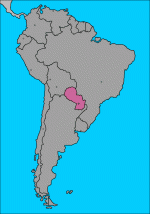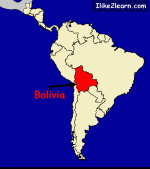Alaska 03/27/11 newsminer.com: by Dan Joling – (Excerpt) Inupiat Eskimo villagers in the Chukchi Sea village of Kivalina rely on wild animals to survive, but a recent arrival associated with climate warming is causing health concerns. Beavers have colonized the Wulik River, Kivalina’s main source for water.  Beaver feces carry a microscopic protozoa that can cause giardia, known to campers elsewhere in Alaska as “beaver fever.†Diarrhea and vomiting are symptoms. Kivalina hunters using the Wulik as a corridor to inland caribou herds have been warned to boil water before drinking it. Beavers are among the unwelcome changes associated with climate change, said Michael Brubaker, lead author of reports documenting how two northwest villages have been affected. The appearance of North America’s largest rodent was a signal that a traditional water source had changed. “It’s a new health issue,†Brubaker said. “It affects people’s behavior. It can affect people’s health and it also affect s the cost of running water facilities.†Brubaker is director of community environment and safety for the Alaska Native Tribal Health Consortium, a health organization managed by tribal governments and their regional health organizations. (For complete article go to http://newsminer.com/view/full_story/12520450/article-Warming-brings-unwelcome-change-to-Alaska-villages?instance=home_lead_story )
Beaver feces carry a microscopic protozoa that can cause giardia, known to campers elsewhere in Alaska as “beaver fever.†Diarrhea and vomiting are symptoms. Kivalina hunters using the Wulik as a corridor to inland caribou herds have been warned to boil water before drinking it. Beavers are among the unwelcome changes associated with climate change, said Michael Brubaker, lead author of reports documenting how two northwest villages have been affected. The appearance of North America’s largest rodent was a signal that a traditional water source had changed. “It’s a new health issue,†Brubaker said. “It affects people’s behavior. It can affect people’s health and it also affect s the cost of running water facilities.†Brubaker is director of community environment and safety for the Alaska Native Tribal Health Consortium, a health organization managed by tribal governments and their regional health organizations. (For complete article go to http://newsminer.com/view/full_story/12520450/article-Warming-brings-unwelcome-change-to-Alaska-villages?instance=home_lead_story )
Florida 03/26/11 naplesnews.com: A bat found in Isles of Capri in Collier  County recently tested positive for rabies, a potentially fatal disease of the nervous system. Although no humans were exposed in this case, county health officials want residents to know that rabies, which is transmitted through bites or scratches, is present in the wild animal population.
County recently tested positive for rabies, a potentially fatal disease of the nervous system. Although no humans were exposed in this case, county health officials want residents to know that rabies, which is transmitted through bites or scratches, is present in the wild animal population.
Maryland 03/26/11 times-news.com: Oakland – A raccoon that was involved in an incident with a dog in the Shady Dell Road area tested positive for rabies and is the first confirmed case in the county this year, according to Environmental Health Services of the Garrett County Health Department. The  incident occurred Tuesday and the state Department of Health and Mental Hygiene Rabies laboratory in Baltimore confirmed the positive result for rabies Wednesday. The health department will hold its first round of low-cost rabies clinics throughout the county in May. Questions regarding rabies can be directed to 301-334-7760 or 301-895-3111.
incident occurred Tuesday and the state Department of Health and Mental Hygiene Rabies laboratory in Baltimore confirmed the positive result for rabies Wednesday. The health department will hold its first round of low-cost rabies clinics throughout the county in May. Questions regarding rabies can be directed to 301-334-7760 or 301-895-3111.
Tennessee 03/28/11 wkrn.com: A legislative bill that would allow commercial deer farming in Tennessee is scheduled for discussion by a House  subcommittee on Tuesday. A state wildlife conservation group opposes it, saying it could spread chronic wasting disease. The bill would require state agriculture officials to license breeding operations to raise white-tail deer, primarily for hunting on private ranches, reports The Commercial Appeal. CEO Mike Butler of the Tennessee Wildlife Federation says the spread of disease isn’t the only problem with the proposal, contending that shooting farm-raised deer isn’t sporting. Knoxville Republican Frank Nicely sponsored the bill and the newspaper says he didn’t return its call. A call offering Nicely an opportunity for comment was left at his office on Monday by The Associated Press.  Â
subcommittee on Tuesday. A state wildlife conservation group opposes it, saying it could spread chronic wasting disease. The bill would require state agriculture officials to license breeding operations to raise white-tail deer, primarily for hunting on private ranches, reports The Commercial Appeal. CEO Mike Butler of the Tennessee Wildlife Federation says the spread of disease isn’t the only problem with the proposal, contending that shooting farm-raised deer isn’t sporting. Knoxville Republican Frank Nicely sponsored the bill and the newspaper says he didn’t return its call. A call offering Nicely an opportunity for comment was left at his office on Monday by The Associated Press.  Â
Texas 03/26/11 boernestar.com: This year’s first case of rabies was  confirmed this week when remains of a cat killed by a property owner in the Marquardt Road area near Comfort tested positive for the viral infection. Kendall County Sheriff Department Chief Deputy Matt King said the homeowner was working in his goat pens March 23 when the cat attacked him and his dog. The homeowner is being treated by his family physician and the dog was given a booster for its current rabies vaccination. The cat’s remains were tested at the San Antonio Metropolitan Health District. Report any suspicions or concerns about an animal to the Kendall County Sheriff’s Office at 830-249-9721 or the Kendall County Animal Shelter at 830-537-3430.
confirmed this week when remains of a cat killed by a property owner in the Marquardt Road area near Comfort tested positive for the viral infection. Kendall County Sheriff Department Chief Deputy Matt King said the homeowner was working in his goat pens March 23 when the cat attacked him and his dog. The homeowner is being treated by his family physician and the dog was given a booster for its current rabies vaccination. The cat’s remains were tested at the San Antonio Metropolitan Health District. Report any suspicions or concerns about an animal to the Kendall County Sheriff’s Office at 830-249-9721 or the Kendall County Animal Shelter at 830-537-3430.
Canada:
Ontario 03/27/11torontosun.com: by Ian Robertson – Coyotes — like the  one seen Sunday in the Beach area — are pleasing animal lovers and spreading fear among pet-owners. One living in the Neville Park Ave. ravine recently brought howls of protest from an owner who scared it into dropping her dog, residents said. The poodle-mix is back roaming its yard with a stitched-up neck, but is watched more carefully by his owner, who does not want to be named.
one seen Sunday in the Beach area — are pleasing animal lovers and spreading fear among pet-owners. One living in the Neville Park Ave. ravine recently brought howls of protest from an owner who scared it into dropping her dog, residents said. The poodle-mix is back roaming its yard with a stitched-up neck, but is watched more carefully by his owner, who does not want to be named.
Residents have called the coyote Neville for years, but others roam Toronto parks and wooded ravines. “I like the coyote because it kills squirrels, which are vermin,†Neville Park resident Richard Milne said. “I saw a coyote in my back yard … it’s a pretty animal.†This is mating season and the grey-and-sandy-hued cousin of the Gray Wolf become bolder, hunting food for pregnant mates.
A coyote in 2009 ate a chihuahua in the Beach area, a Maltese pup was snatched in Pickering last February, and police killed a coyote in Whitby one month later. Some residents demand the city trap coyotes, but wily Neville evaded capture last year. Others like having the animals in their neighbourhood. If removed, others would take their place in “naturalized areas,†Deputy Mayor Doug Holyday said. “I certainly sympathize with anyone who has lost a pet, but it would be impossible to trap and get rid of all the coyotes in the city,†he said. “If we want natural areas, it’s going to attract wildlife.†While walking her dogs along Queen St., Sonia Funk said “I’d be more worried about cars than coyotes.â€
Watching one sunning in her ravine rock garden Sunday, Elizabeth Berry said:  “They’re so beautiful, you want to reach out and pet them, but …†Berry said she appreciated receiving a city pamphlet last month, with tips to avoid coyotes, but does not want to scare Neville away. “Some people are concerned about them attacking their children and small pets,†she said. But Berry, an artist who has painted Neville several times, said she knows neighbours “who put left-overs out.†Experts say coyotes rarely approach people but are attracted to readily-available food.
“They’re so beautiful, you want to reach out and pet them, but …†Berry said she appreciated receiving a city pamphlet last month, with tips to avoid coyotes, but does not want to scare Neville away. “Some people are concerned about them attacking their children and small pets,†she said. But Berry, an artist who has painted Neville several times, said she knows neighbours “who put left-overs out.†Experts say coyotes rarely approach people but are attracted to readily-available food.
Travel Warnings:
Brazil 03/28/11 brazzilmag.com: by Carolina Pimentel – At the moment, a new  type of dengue has returned to Brazil – type 4. Health officials are concerned as type 4 dengue has not been seen in Brazil for almost three decades. Celso Granato of the Federal University of São Paulo (Unifesp) explains that type 4 is not more dangerous, infectious or fatal than other types, but as it has not circulated for so long, people are not immune to it. As a result, people who have had other types that have been in circulation recently face the possibility of more serious consequences if they get type 4. “Some people can get dengue for a second or even a third time, after having type 1 or 3 (which are more common in Brazil). Unfortunately, they will be more susceptible to type 4,†says Granato.
type of dengue has returned to Brazil – type 4. Health officials are concerned as type 4 dengue has not been seen in Brazil for almost three decades. Celso Granato of the Federal University of São Paulo (Unifesp) explains that type 4 is not more dangerous, infectious or fatal than other types, but as it has not circulated for so long, people are not immune to it. As a result, people who have had other types that have been in circulation recently face the possibility of more serious consequences if they get type 4. “Some people can get dengue for a second or even a third time, after having type 1 or 3 (which are more common in Brazil). Unfortunately, they will be more susceptible to type 4,†says Granato.
An infectious disease expert, Edmilson Migowski, at the Rio de Janeiro Federal University (UFRJ), says that because the type 4 has been absent from Brazil for so long it could easily become an epidemic. “If nothing is done to increase mosquito control, we could have a drastic situation in the summer of 2012. A dengue type 4 epidemic will not spare anyone,†declared Migowski. Data from the Ministry of Health shows that around 80% of all dengue cases in Brazil are type 1. So far, according to a ministry survey, dengue type 4 has been found in a little over 5% of cases in three states: Roraima, Amazonas and Pará (all three states are in the northern part of the country, in the Amazon region). Cases have also been reported in Rio de Janeiro, Bahia and PiauÃ. Brazil’s Ministry of Health has recognized that dengue type 4 poses a threat and has requested that state authorities increase mosquito control and expand urban clean up operations. The ministry has also made notification of dengue type 4 cases mandatory.
Brazil 03/28/11 vietnamnet.vn: According to the city’s Health Secretariat, in less than three months, the number of confirmed dengue fever cases in Rio reached 10,158, exceeding the figures registered in the entire years of 2009 (2,723) and 2010 (3,120). In Rio de Janeiro state, the number of confirmed dengue fever cases reached 20,150, and the death toll rose to 18. This week, the first two cases of type-4 dengue fever in Rio de Janeiro state were confirmed in the city of Niteroi. The type-4 dengue fever is not more dangerous than the other types, but as the disease had not been registered in the region before, the local population has no immunity to it. As there are four different types of dengue fever, a person can develop the disease several times. The last epidemic of dengue fever in Rio de Janeiro state occurred in 2008 when 174 people died of the disease and some 250,000 cases of dengue were registered
Paraguay 03/26/11 mercopress.com: “We have 18 dengue deaths confirmed  in Paraguay and 2.500 infected of which 1.300 are hospitalized†said Ivan Allende head of the Sanitary Vigilance Department in Asuncion. He also called on the population to immediately report to a clinic or hospital on suspicion of having contracted the disease, which again reappeared with extreme force in late December with the rainy season. “In previous years we never had so many people hospitalized†added Allende who indicated that only zero temperatures can help eliminate the mosquito larvae. “Until then we must insist people must collaborate watching out for stagnant water in bottles, old tyres, and flower pots and obviously in toilets and sewageâ€.
in Paraguay and 2.500 infected of which 1.300 are hospitalized†said Ivan Allende head of the Sanitary Vigilance Department in Asuncion. He also called on the population to immediately report to a clinic or hospital on suspicion of having contracted the disease, which again reappeared with extreme force in late December with the rainy season. “In previous years we never had so many people hospitalized†added Allende who indicated that only zero temperatures can help eliminate the mosquito larvae. “Until then we must insist people must collaborate watching out for stagnant water in bottles, old tyres, and flower pots and obviously in toilets and sewageâ€.
In Bolivia the death toll has climbed to 20 and the number of infected totals  1.670. Furthermore areas in the east of the country, Santa Cruz de la Sierra, bordering with Brazil and Paraguay have been declared under “sanitary emergencyâ€. “We’ve registered a peak in the epidemics this year compared to 2010, which was quite mild compared to the record year of 2009 with 22 dengue deaths and 50.000 infections with the diseaseâ€, said Bolivian Health minister Nilda Heredia. However she also pointed out that local health officials have been successful in containing the spread of the disease in the province of Beni bordering with Brazilian Amazon. The operation took place last December. Nevertheless there is concern “since we believe a new strain of the disease has entered Bolivia from Brazil. This strain is different to the one from the two previous years and is more aggressiveâ€, said Ms Heredia. Dengue transmitted by the aedes aegypti mosquito causes high fever, head aches, faintings, vomiting, skin eruptions and the haemorrhagic version is deadly.
1.670. Furthermore areas in the east of the country, Santa Cruz de la Sierra, bordering with Brazil and Paraguay have been declared under “sanitary emergencyâ€. “We’ve registered a peak in the epidemics this year compared to 2010, which was quite mild compared to the record year of 2009 with 22 dengue deaths and 50.000 infections with the diseaseâ€, said Bolivian Health minister Nilda Heredia. However she also pointed out that local health officials have been successful in containing the spread of the disease in the province of Beni bordering with Brazilian Amazon. The operation took place last December. Nevertheless there is concern “since we believe a new strain of the disease has entered Bolivia from Brazil. This strain is different to the one from the two previous years and is more aggressiveâ€, said Ms Heredia. Dengue transmitted by the aedes aegypti mosquito causes high fever, head aches, faintings, vomiting, skin eruptions and the haemorrhagic version is deadly.
 Meantime from Venezuela the latest Epidemiologic report from the Ministry of Health shows that 124.931 cases of dengue were reported last year which is almost double the 65.869 from 2009. In 2010 haemorrhagic dengue was detected in 10.279 cases. The report also admits that the disease has spread to the country’s 24 provinces, although in 22 the tendency is to decrease. The areas with the greatest numbers are the most populated including metropolitan Caracas, Merida and the states of Miranda and Zulia, concludes the report.
Meantime from Venezuela the latest Epidemiologic report from the Ministry of Health shows that 124.931 cases of dengue were reported last year which is almost double the 65.869 from 2009. In 2010 haemorrhagic dengue was detected in 10.279 cases. The report also admits that the disease has spread to the country’s 24 provinces, although in 22 the tendency is to decrease. The areas with the greatest numbers are the most populated including metropolitan Caracas, Merida and the states of Miranda and Zulia, concludes the report.

没有评论:
发表评论